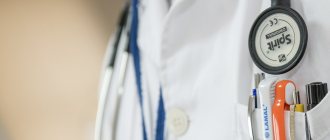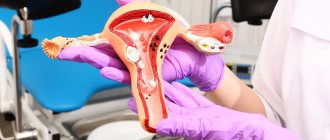What is HRT aimed at?
In older women, hypoestrogenism causes memory loss, which affects work. And HRT helps solve the problem of deteriorating mental abilities. Due to a lack of bone mass, older people are susceptible to fractures. In women, this risk increases sharply after menopause. Trying to take tons of calcium is useless: it is not absorbed against the background of a hypoestrogenic state. If a woman has a predisposition to osteoporosis, then HRT is vital for her. Classic osteoporosis type: blonde secretary with a cup of coffee in front of the computer. This is exactly the image that is drawn for students at the department for ease of memorization. In other words, this is a woman with low body weight, she has a sedentary job, she drinks a lot of coffee and smokes.
The second type - the northern peoples (Evenks, Chukchi) - have genetically thin bones that break easily in old age. And there are also families where fractures occur in several generations among elderly and senile people. If these risk groups begin to take estrogens, their bone mass will be restored, which means that the possibility of fractures will be delayed for a considerable time. In addition to osteoporosis, older women face no less dangerous traps: coronary heart disease, myocardial infarction, hypertension.
After menopause, atherosclerosis progresses sharply. The only thing that can protect a woman in this situation is estrogens, which will slow down the development of these diseases. It has been clearly proven that with a high concentration of estrogen in the blood, the risks of Alzheimer's disease and intestinal cancer are significantly reduced. HRT solves the problems of urinary incontinence, vaginal dryness, which makes sexual life difficult, even making it impossible. But most of all, a woman suffers from autonomic dysfunction, from hot flashes, when the face turns crimson-red in a second, from irritability, and night sweats. These menopausal symptoms make being in society uncomfortable, even unbearable. There are women who suffer from severe menopause for 6–10 years. And all their suffering is relieved by HRT.
Contraindications
The drug is not prescribed:
- women who have been diagnosed with malignant estrogen- or progestogen-dependent tumors , as well as if these diseases are suspected;
- patients with diagnosed or suspected breast cancer ;
- with vaginal bleeding of unspecified origin;
- with untreated hyperplasia (pathological growth) of the endometrium ;
- venous thromboembolism detected at the moment or noted in the anamnesis (including DVT and PE);
- if the patient has certain thrombophilic disorders (including thrombophilia associated with deficiency of antithrombin , coagulation protein C or its cofactor - protein S );
- for thromboembolic arterial diseases , including angina pectoris or myocardial infarction (both in the active stage and in cases where the disease was suffered in the recent past);
- in case of active liver , and also if the patient’s liver biochemical parameters ;
- with porphyrin disease ;
- if you are aware of individual intolerance to estradiol , dydrogesterone or auxiliary components of Femoston;
- children and adolescents under 18 years of age;
- during pregnancy (both established and suspected pregnancy);
- during lactation.
When is HRT prescribed?
For different ages, the dosages of hormones vary: there are drugs for women under 45 years old, from 45 to 50, from 51 and older. During perimenopause (before menopause), high doses are prescribed, then they are gradually reduced. Unfortunately, you may be late to jump into the last carriage of the departing train. If, for example, atherosclerosis has already developed, then it has managed to close the estrogen receptors, and no dose of the hormone will make them act. That is why it is so important to start taking sex hormones as early as possible, even if the menopausal syndrome is not yet pressing: you do not suffer from hot flashes, bouts of sweating, insomnia, irritability, hypertension.
There is a term “therapeutic window”. After 65 years, hormone therapy, as a rule, is not prescribed: sex hormones will no longer be able to properly engage in the functioning of the human mechanism. But if HRT is started on time, then it can be continued as long as the heart beats. If there are no contraindications. You need to understand that HRT is not an elixir of immortality; it will not give you extra years of life, but it will greatly improve your quality of life.
Will herbs help with menopause?
Recently, phytohormones have been actively promoted as the best and safest remedy against menopausal syndrome. And many gynecologists advise drinking dietary supplements with phytoestrogens during perimenopause. Plant hormone-like substances really work and help cope with hot flashes, insomnia, and irritability. But few people know that against their background, endometrial hyperplasia (proliferation of the inner layer of the uterus) is more common. This property of estrogen and estrogen-like substances in standard HRT is compensated by gestagen - it does not allow the endometrium to grow. Exclusively estrogen (without gestagen) is prescribed to women if the uterus has been removed. True, recent studies show a beneficial effect of gestagen on both the central nervous system and the mammary glands - it prevents the development of tumors. Unfortunately, unlike real estrogens, phytoanalogues have no effect on metabolism, calcium absorption, or the condition of blood vessels. Plant hormones are a compromise and salvation for those for whom real HRT is contraindicated. But doctor's supervision and regular examinations are also necessary.
Hormones and beauty
Any hormonal changes affect the condition of the skin. Cosmetic procedures themselves are effective only up to 40 years of age. After this, injections of hyaluronic acid, botulinum toxin, peelings are only half the battle; first of all, you need to normalize the hormonal status. When a circumferential lift is performed, excess tissue is cut off, but the quality of the skin remains the same. If there is no estrogen, the skin will be dry, dehydrated, without the proper amount of collagen and elastin. Wrinkles will appear again and again. If you replace the level of estrogen with the help of HRT, the emerging wrinkles will not disappear, but will stop getting deeper. And the weight will not increase.
Interaction
Drug interaction studies with Femoston have not been conducted.
However, it is known that some drugs may affect the effectiveness of estrogens and progesterones .
Thus, anticonvulsants (for example, phenytoin or phenobarbital ) and antimicrobial (including nevirapine , rifampicin or efavirenz enzymes of the cytochrome P450 system involved in drug metabolism .
Ritonavir and nelvinavir , which are potent inhibitors of CYP 3A4, A5 and A7 isoenzymes, in combination with steroid hormones , promote the activation of these cytochromes.
Herbal remedies based on St. John's wort (Hypericum perforatum) can stimulate the biotransformation of estrogens and progestogens due to the ability to influence the CYP 3A4 isoenzyme.
There is evidence that the more active metabolism of estrogens and progestogens provokes a decrease in the clinical effectiveness of these substances and affects the profile of uterine bleeding.
In turn, estrogens can disrupt the process of biotransformation of other substances due to competitive suppression of cytochromes of the P450 system , which take part in the processes of biotransformation of active drug substances.
This should be remembered when prescribing estrogens in combination with drugs that have a narrow therapeutic index, including fentanyl , tacrolimus , theophylline , cyclosporine .
Such combinations can cause an increase in the plasma concentration of these substances to a toxic level. Therefore, there may be a need for careful monitoring of the drug over an extended period of time, as well as a reduction in the dose of cyclosporine, tacrolimus, theophylline and fentanyl .
Risks of using HRT
There are contraindications to HRT, and complications with their use exist. Estrogens increase the risk of endometrial cancer if taken without progestins. To prevent this, a second component, gestagen, is added to hormone replacement therapy drugs. The patient is prescribed drugs with pure estrogens only if the uterus is removed.
Very severe obesity, in which there is increased blood clotting, operated breast cancer, renal failure - all these are good reasons for refusing HRT. But chronic pyelonephritis does not interfere with HRT. As for hypertension, in some forms HRT can form the basis for a woman’s treatment, but in others it cannot be used. Therefore, the doctor must conduct a comprehensive examination and only after that decide on HRT.
How do estrogens affect blood vessels?
All arterial vessels are lined from the inside with a thin layer of endothelial cells. Their task is to expand or narrow the vessel in a timely manner, as well as protect it from cholesterol and blood clots. The endothelium depends on estrogens: if it is suddenly damaged, estrogens help it recover. When there are few of them, endothelial cells do not have time to recover. The vessels “age”: they lose elasticity, become overgrown with cholesterol plaques, and narrow. And since the vessels cover all organs, it turns out that estrogens affect the functioning of the heart, kidneys, liver, lungs... Estrogen receptors are found in all cells of a woman’s body.
Taking the hormonal drug Femoston together with ethanol
Taking hormonal medications lasts quite a long time.
Long-term treatment forces a person to change his habits and monitor his health more carefully. In order for the therapy to give a positive result, you should discuss in advance with your doctor all possible nuances of nutrition, whether you can drink alcohol during this period or not.
It is impossible to predict how alcohol will behave along with taking Femoston tablets, because alcoholic beverages are the first thing that the doctor strongly recommends limiting.
What examinations need to be carried out during HRT
When prescribing hormone replacement therapy, it is necessary to undergo tests that will help eliminate contraindications. Plus some basic research. It is necessary to undergo an examination by a gynecologist, an ultrasound of the pelvic organs, a biochemical blood test with an emphasis on liver function indicators and a blood test for coagulation. In the future, mammography, ultrasound of the uterus and ovaries, and a smear for oncocytology from the cervix are required once a year.
It is important to check the blood for coagulability and glucose levels, so as not to miss diabetes mellitus, to check the functioning of the liver - a biochemical blood test is taken. Serious liver problems, such as the effects of hepatitis, cirrhosis, diabetes, are most often a contraindication for hormone therapy. With minimal liver damage, HRT can be prescribed, but not in tablets, but in the form of a patch or gel. Thyroid pathology should be taken into account. HRT is not prescribed for uterine bleeding of unknown origin, otherwise cancer can grow. Gallstones are not an obstacle to HRT; they are removed and then treated with hormones.
If you are overweight, you should find out what is causing it. Perhaps thyroid dysfunction causes increased production of prolactin, which leads to obesity? Or maybe the culprit is the increased activity of the adrenal cortex, where hormones are produced that are responsible for the accumulation of fat?
And when starting therapy, it is very important to remember: hormones are not a magic wand. The effect may be reduced due to poor nutrition. Any woman today knows what proper nutrition is: a lot of vegetables and fruits, lean meat, fish several times a week, plus vegetable oil, nuts and seeds.
Compound
One Femoston 1/5 tablet contains estradiol and dydrogesterone in concentrations of 1 and 5 mg, respectively.
The auxiliary components used are: lactose in the form of monohydrate, methylhydroxypropylcellulose, anhydrous colloidal silicon dioxide, corn starch, macrogol 400, magnesium stearate, iron dyes (yellow oxide E172 and red E172), titanium dioxide (E171), Opadry orange. Femoston Conti 1/5 tablets have a similar composition.
Femoston 1/10 white tablets use estradiol . Substance concentration - 1 mg/tab. Each gray Femoston tablet contains estradiol and dydrogesterone estradiol per 10 mg dydrogesterone ).
Femoston 2/10 pink tablets contain estradiol at a concentration of 2 mg/tablet. Light yellow tablets contain estradiol and dydrogesterone estradiol per 10 mg dydrogesterone ). Auxiliary components: lactose in the form of monohydrate, hypromellose, magnesium stearate, corn starch, colloidal silicon dioxide, Opadry (white, gray, pink and yellow, respectively).
Prescriptions of the drug Femoston
The drug Femoston is a hormone replacement therapy. Its composition is synthetic, active substances estradiol and dydrogesterone - analogues of the female sex hormones estradiol and progesterone.
Progesterone affects the growth, development of the fetus, and pregnancy. Estradiol is responsible for the psycho-emotional and vegetative background of a woman during menopause.
The doctor prescribes Femoston for women who have entered the stage of age-related changes and associated psycho-emotional disorders: rapid heartbeat, hot flashes, sleep disturbances, for the prevention of osteoporosis, which is a very common manifestation of menopausal changes
The drug is also prescribed to women who, for a number of reasons, have failed to become pregnant.
Before prescribing a medicine to a patient, the doctor will necessarily collect a full range of medical tests and conduct a gynecological examination for hidden contraindications and identified diseases.
During direct administration of Femoston, it is recommended to conduct periodic examinations and pay attention to clinical changes in the body.
Femoston and infertility
In addition to clinically proven indications for use, there is a practice of taking the drug in the treatment of infertility caused by hypofunction of the uterine epithelium. The prescription of Femoston when planning pregnancy is based on its ability to cause active growth of the endometrium in the first phase of the cycle. For a lasting therapeutic effect, it is recommended to continue therapy for 2-3 months. Pregnancy becomes possible after discontinuation of the drug.
This treatment tactic has both its supporters and opponents. Negative reviews from doctors and patients are usually associated with a high risk of side effects and the presence of a number of contraindications. However, the effect of the therapy is controversial.
Reasons for prescribing hormone therapy
Hormones are responsible for the vital functions of the human body. Their production occurs on the principle of replacement: if somewhere their level decreases, then a specific endocrine gland begins active production. Where there are not enough hormones, the organ’s performance deteriorates, and where there is an excess, hyperactivity occurs. Neither one nor the other brings any benefit to a person. There are three types of hormone therapy available:
- blocking – inhibits the active work of the glands;
- stimulating – strengthens the endocrine glands with decreased activity;
- replacement – used in the complete absence of a certain type of hormone.
Are there any other analogs of Femoston?
Often, women during menopause, in addition to hormone-containing drugs, are also prescribed drugs of a different chemical nature. Main groups:
- homeopathic phytoestrogens (Remens, Klimadinon, Estrovel);
- antidepressants (Venlafaxine, Fluoxetine);
- antiepileptic drugs (Gabapentin).
For health reasons, other means of symptomatic therapy may be prescribed.
Hormonal antimenopausal drugs have a number of desirable and undesirable features associated with the effect of estrogens on the body. Before starting to take this group of drugs, you should always weigh all the advantages and disadvantages of the therapy.
See also a video about the use of Femoston during menopause:
Did you like the article? Subscribe to updates via RSS, or follow updates on VKontakte, Odnoklassniki, Twitter or Google Plus.
Receive updates directly by email:
Tell your friends! Share the article with your friends on your favorite social network using the buttons on the panel.
Femoston and alcohol
The situation when a woman’s body disrupts the production of its own sex hormones is quite common. These are, first of all, conditions associated with the onset of menopause or surgical removal of the reproductive organs (ovaries, uterus).
In this situation, the main goal of therapy is to compensate for the deficiency of the hormone estrogen and eliminate the consequences of its lack for the body. The drug Femoston is included in the list of drugs to combat the manifestations of the above conditions.






